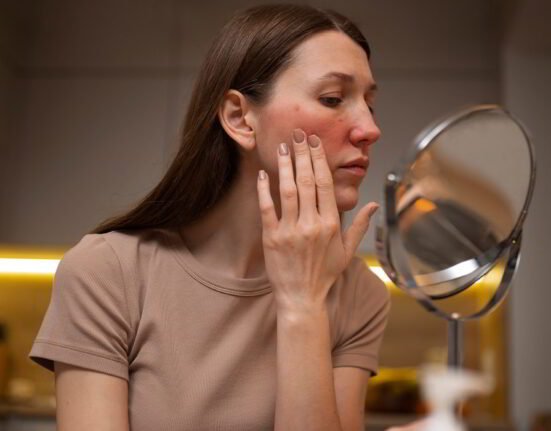Have you ever felt a sudden terror strike you out of the blue? Your heart is thumping in your chest. You are breathing but it feels like the air is not reaching your lungs. You are shaking and sweating all over. Your fingers and toes are numb. Your head is spinning. You can’t help thinking that this will last forever. If you’ve ever felt what’s described above then it’s likely that you’ve experienced panic attacks. The American Psychological Association describes a panic attack as a sudden onset of intense apprehension and fearfulness in the absence of actual danger, accompanied by the presence of such physical symptoms…The attack occurs in a discrete-time and often involves fears of going crazy, losing control, or dying.
Read More: Panic Attacks: What They Are and How to Deal with Them
According to the Diagnostic and Statistical Manual of Mental Disorders (DSM)- V, a panic attack is accompanied by four (or more) of the following physical, emotional, and mental symptoms:
- Sweating
- Fear of dying
- Feelings of choking
- Trembling or shaking
- Chest pain or discomfort
- Chills or heat sensations
- Nausea or abdominal distress
- Numbness or tingling sensations
- Sensations of shortness of breath
- Fear of losing control or “going crazy”
- Feeling dizzy, unsteady, light-headed, or faint
- Palpitations, pounding heart, or accelerated heart rate
- Derealisation (feelings of unreality) or depersonalisation (being detached from oneself)
These symptoms peak within minutes and can last from a few minutes to even hours.
Panic Attacks can be Broadly Divided into Three Types
- Uncued panic attacks: A panic attack that occurs unexpectedly without any specific situation or trigger. It is mostly associated with panic disorder.
- Situationally predisposed panic attack: A panic attack that may occur in response to a specific situational trigger, but not always. Example: Someone might occasionally have panic attacks while speaking in front of large crowds.
- Cued panic attacks: A panic attack that occurs almost invariably during the exposure or anticipation of a specific situation. For example: Someone with acrophobia may have a panic attack just by thinking about looking down from a tall building.
While researchers are still unsure as to what exactly causes a panic attack, the following causes have been proposed and are supported by extensive research
- Brain activity: Increased activity in the amygdala which is critically involved in the emotion of fear plays a central role in panic attacks.
- Psychological Causes: People with panic disorders interpret ambiguous bodily sensations and ambiguous situations as more threatening.
- Biochemical Abnormalities: People with panic disorder experienced more panic attacks when they were exposed to various biological challenge procedures than normal people or people with other psychiatric disorders. In other studies, healthy adults also experienced panic attacks when they consumed large amounts of caffeine.
According to Counseling Psychologist Anjali Sethi, in a situation where a friend is experiencing distress, it is important to remain calm and approach the situation with empathy. Rather than immediately offering suggestions, I would first acknowledge the seriousness of the situation and let my friends know that I am there to support them. I would ask if they need anything or if they would prefer to go somewhere quiet. By giving them the space to express their feelings without judgment, I can help them feel heard and understood. If I notice that my friend is still struggling and fixating on their symptoms, I would gently guide them to focus on their breathing, which can help ease their distress and bring them some relief.
How to Calm Oneself Down During a Panic Attack
- Deep breathing: Studies have found that taking slow, deep breaths can help prevent hyperventilation or rapid breathing which is often a symptom of panic attacks.
- Acknowledge that you are having a panic attack: Keep in mind that you are experiencing a panic attack and not a life-threatening health issue can help subside the intense fear of “going crazy” or dying.
- Mindfulness: Feelings of derealisation and depersonalisation often accompany an individual having panic attacks, hence practising mindfulness and focusing on the present can help ground oneself.
- Progressive Muscle Relaxation: Also known as Jacobson’s relaxation technique, it involves tightening and relaxing different muscle groups in a specific pattern to release tension from the muscles. During a panic attack, tension can build up in the muscles, hence relaxation can help with easing some of the physical symptoms.
Read More: Janhvi Kapoor Talked about her Panic Attack in an Interview
You can try the following grounding techniques
The 5-4-3-2-1 technique:
List
- 5 things you hear
- 4 things you see
- 3 things you can touch around you
- 2 things you can smell
- 1 thing you can taste
- The 3-3-3 technique
- Notice three things you see
- Notice three sounds you hear
- Move three parts of your body
- Hold a piece of ice: Notice the following sensations; How does the chill feel against your skin? How does it melt? What sensations do you observe?
- Body scan: Focus on your body and notice the sensations you feel by starting with your feet. Slowly move up towards your head. Try to avoid judging what you feel and just gently take everything in.
- Savour a food or scent: Eat something that has a strong flavour and appeals to your taste buds or smell a perfume or scented candle. These can stimulate your senses and bring you back to the here and now.
- Visualisation: Let your mind wander into a place or situation that you find calming and relaxing. Picture yourself at your favourite cafe or a cosy corner doing your favourite activity. This can help combat the feelings of intense fear.
According to Clinical Psychologist Divya Tiwari, there are several effective strategies for managing a panic attack. Start by focusing on your breath, using techniques like abdominal or box breathing to help calm your body. Engaging your senses with cold stimuli—such as eating something cold or splashing water on high nerve points like your wrists, fingertips, behind your ears, or neck—can also be grounding. It’s important to find a calm space and reach out to someone who makes you feel safe, letting them know you’re experiencing a panic attack and would appreciate their support. During the attack, try to notice where you’re feeling symptoms in your body and speak to yourself in calm, compassionate tones, reminding yourself that you are safe and that the sensations will pass. Pre-prepared affirmations, such as “I am safe” and “This will pass,” can help reassure yourself. After the panic attack subsides, it’s advisable to speak with a professional to explore underlying causes and develop long-term management strategies
Read More: What are Nocturnal Panic Attacks?
Remember that panic attacks are normal, manageable, and curable. If you are struggling with frequent panic attacks that are hindering your life, don’t hesitate to tell a trusted one and visit a mental health professional.
References +
American Psychiatric Association. (2013). Anxiety disorders. In Diagnostic and statistical manual of mental disorders (5th ed.). https://doi.org/10.1176/appi.books.9780890425596.dsm05
- Nardi, A. E., Lopes, F. L., Valença, A. M., Freire, R. C., Veras, A. B., De-Melo-Neto, V. L., Nascimento, I., King, A. L., Mezzasalma, M. A., Soares-Filho, G. L., & Zin, W. A. (2007). Caffeine challenge test in panic disorder and depression with panic attacks. Comprehensive Psychiatry, 48(3), 257–263. https://doi.org/10.1016/j.comppsych.2006.12.001
- Klevebrant, L., & Frick, A. (2022). Effects of caffeine on anxiety and panic attacks in patients with panic disorder: A systematic review and meta-analysis. General Hospital Psychiatry, 74, 22–31. https://doi.org/10.1016/j.genhosppsych.2021.11.005
- Banushi, B., Brendle, M., Ragnhildstveit, A., Murphy, T., Moore, C., Egberts, J., & Robison, R. (2023). Breathwork Interventions for Adults with Clinically Diagnosed Anxiety Disorders: A Scoping Review. Brain Sciences, 13(2), 256. https://doi.org/10.3390/brainsci13020256
- Clark, D. M., Salkovskis, P. M., & Chalkley, A. (1985). Respiratory control as a treatment for panic attacks. Journal of Behavior Therapy and Experimental Psychiatry, 16(1), 23–30. https://doi.org/10.1016/0005-7916(85)90026-6
- Teachman, B. A., Marker, C. D., & Clerkin, E. M. (2010). Catastrophic misinterpretations as a predictor of symptom change during treatment for panic disorder. Journal of Consulting and Clinical Psychology, 78(6), 964–973. https://doi.org/10.1037/a0021067













Leave feedback about this